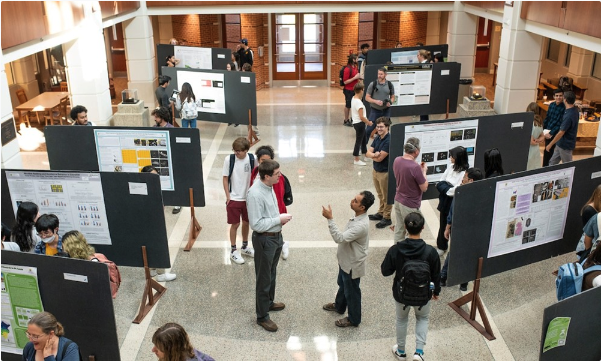Document Type
Poster
Publication Date
Fall 10-6-2022
Abstract
The Peach Springs Tuff (PST) is a uniquely identifiable ignimbrite deposit formed by a large caldera-forming volcanic eruption during the early Miocene era. Previous investigations (e.g., Miller et al., 1986; Neilson et al., 1990) have suggested that distal ignimbrite deposits located within the Mojave region of southern California belong to the PST eruptive event. To address this hypothesis, this study investigates ignimbrite samples collected from outcrops within the Marble Mountains (n = 6) and Ship Mountains (n = 8) of southern California. Petrographic analysis reveals the abundance of quartz, sanidine, titanite, hornblende, and biotite in most ignimbrite samples. These mineral phases agree well with previous heavy mineral studies of the PST (Gusa, 1986). Electron Probe Micro-Analysis (EPMA) reveals average biotite, hornblende, and sanidine compositions that closely match PST values. Our data suggests that the ignimbrite deposits in the Marble and Ship mountains are distal exposures of the PST.
Recommended Citation
Shrestha, Kelsang; Loocke, Matthew; and Brown, Kenneth, "Distal Exposures of the Miocene Peach Spring Tuff in the Marble and Ship Mountains, CA" (2022). Annual Student Research Poster Session. 97, Scholarly and Creative Work from DePauw University.
https://scholarship.depauw.edu/srfposters/97



Comments
We would like to thank Dipson Pradhan for helping in the preparation of thin sections, the Buehler Biomedical Imaging Center (BBIC) for facilitating SEM imagery, and the Geology & Environmental Geoscience Department for their assistance in printing this poster.